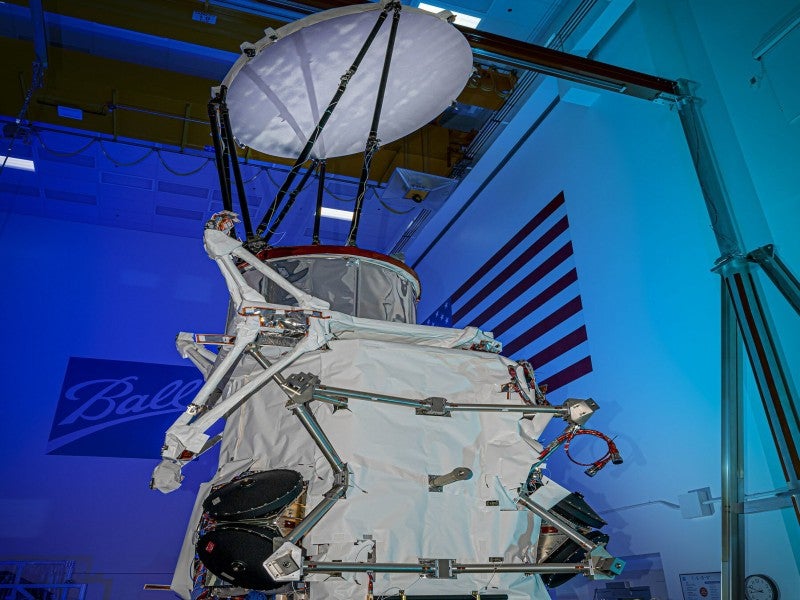
Ball Aerospace has successfully completed the production of a spacecraft bus for the US Space Force’s (USSF) next-generation Weather System Follow-on-Microwave (WSF-M) satellite.
The company has also concluded the integration and environmental testing, using a microwave imager (MWI) instrument, of the satellite bus.
With the completion of this significant milestone, Ball Aerospace has commenced the process of space vehicle assembling, integration and testing before the final delivery to the USSF.
Once delivered, the WSF-M satellite will start disseminating mission data to the US Department of Defense’s (DoD) environmental prediction systems, which are used by the country’s multi-domain forces.
The new operational environmental satellite system will provide actionable real-time environmental intelligence to support the military operations currently underway around the world.
Ball Aerospace Strategic Operations vice-president Hope Damphousse said: “We are moving forward with spacecraft integration of the MWI sensor, along with a government-furnished energetic charged particle (ECP) sensor, which will be followed by a suite of space vehicle performance and environmental tests.”
How well do you really know your competitors?
Access the most comprehensive Company Profiles on the market, powered by GlobalData. Save hours of research. Gain competitive edge.

Thank you!
Your download email will arrive shortly
Not ready to buy yet? Download a free sample
We are confident about the unique quality of our Company Profiles. However, we want you to make the most beneficial decision for your business, so we offer a free sample that you can download by submitting the below form
By GlobalDataIn addition, the WSF-M payload features a Ball-developed MWI sensor that is used for recording calibrated passive radiometric measurements at different microwave frequencies to collect environmental data such as the intensity of tropical cyclone and sea surface winds.
The initial WSF-M contract was awarded to Ball in 2017. The company said it has also received a contract modification to develop a second WSF-M space vehicle, which is scheduled to complete by late 2027.
The WSF-M programme aims to address the DoD’s three high-priority Space-Based Environmental Monitoring (SBEM) gaps, including tropical cyclone intensity, ocean surface vector winds and space weather gap or low Earth orbit energetic charged particles.
The effort will also minimise three more SBEM gaps, namely sea ice characterisation, soil moisture and snow depth.







